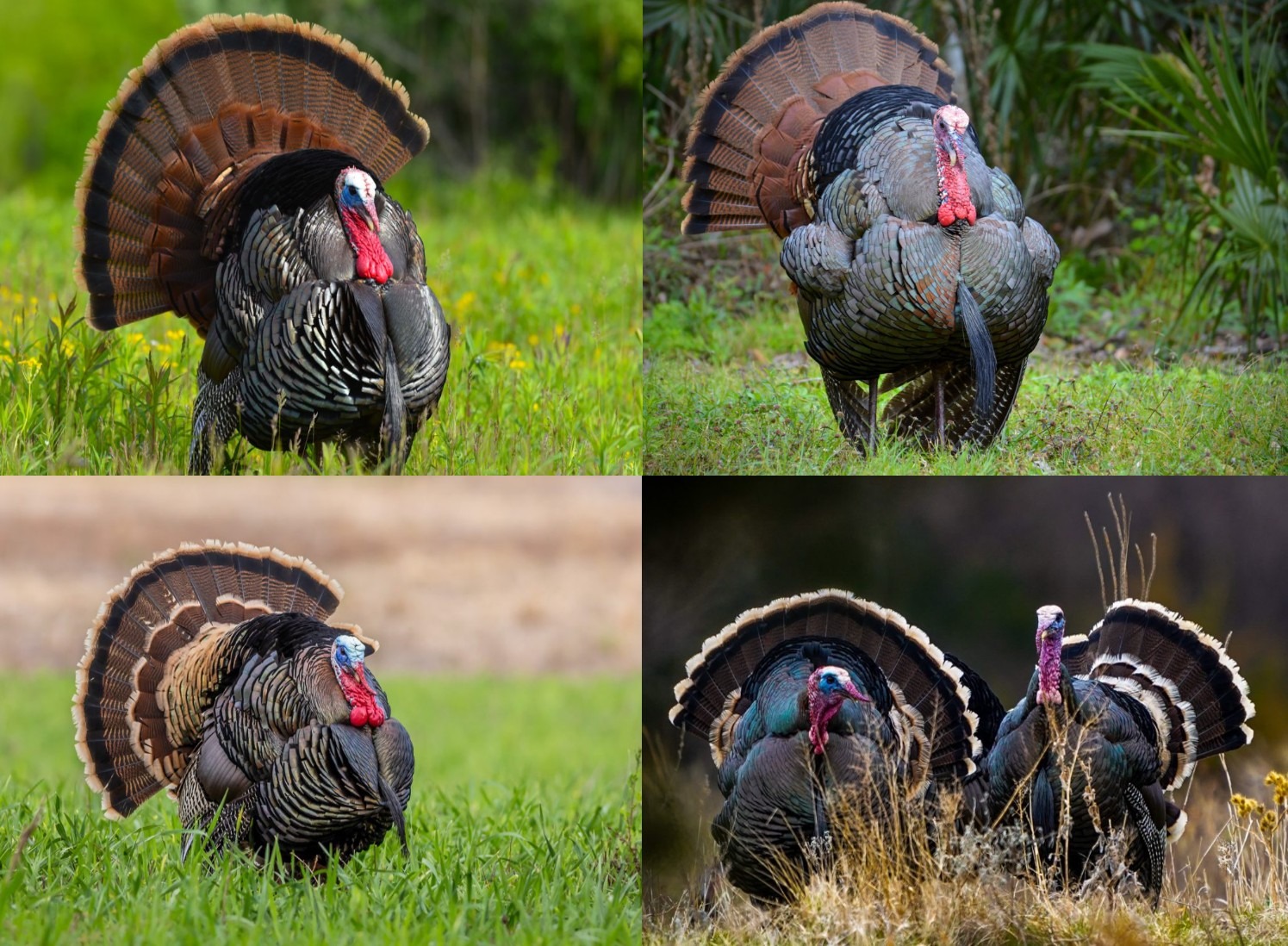- Eastern wild turkey: Eastern wild turkeys are the most widely distributed subspecies east of the Mississippi River. They are also the most abundant. In fact, you can find them in 38 states and numerous Canadian provinces. Characteristics: Chestnut-brown tips on tail feathers, White and Black bars on the wings, Strong gobbes (Hardest gobbling of all subspecies), Second to the Osceola in difficulty of calling in.
-
Osceola (Florida) wild turkey: The Florida wild turkey (also referred to as the Osceola) gets its name from its location. It’s only found in Florida. There are about 100,000 of them in Florida today. Characteristics: Dark-brown tips on tail feathers, Mostly black wings with very small white bands, long spurs, strong gobbles, Considered the toughest species to call in.
-
Rio Grande wild turkey: The Rio Grande wild turkeys are concentrated in western desert regions of Texas, Oklahoma, Kansas and other western states. Mexico also harbors a healthy population. Characteristics: Tan-colored tips on tail feathers, Same amount of black and white barring on wings, Moderate gobbles. - Merriam’s wild turkey: These wild turkeys are most abundant in the mountainous regions of the West. The Rocky Mountains are considered the central hub of the population. Characteristics: Snow-white tips on tail feathers, More white and less black on wings, Weakest gobbles of all subspecies, Shortest beards and spurs of all subspecies.
- Gould’s wild turkey: The Gould’s wild turkey can only be found in Arizona, New Mexico and northern Mexico. It’s population is few in numbers. Characteristics: Light-colored tips on tail feathers, Wings are moderate in coloration, Moderate gobble, beard-length, and spur-length.
- Ocellated wild turkey: The ocellated turkey is a species unto itself and can only be found in a 50,000 square mile area: in the Yucatan Peninsula of Mexico, northern Belize and the El Petén region of northern Guatemala. Characteristics: Rainbow-like iridescent feathering, Grey tail feathers with blue and gold tips, White and black wings, High-pitched gobbles are preceded by a hollow drumming sound, No beard, Very long spurs.



